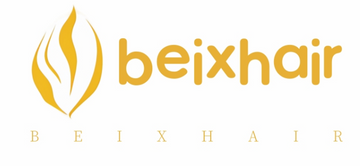When individuals start searching for wigs, the wig density chart is one of the first terms they come across. This chart enables wearers to determine how full, thick, or natural a wig will appear. The concept of wig density may initially be baffling. Still, the difference between the lightweight, medium, and fuller wigs is much easier to imagine with the help of the wig density chart.
The chart is a very important instrument, particularly to beginners who desire to ensure the right balance between volume, comfort, and realism. Indeed, the wig density chart is cited often since it happens to be one of the surest methods of comparing various wigs before buying.
What the Wig Density Chart Represents
The wig density chart is basically a guide that indicates the number of hairs sewn into the wig cap. The density is measured in percentages, with the range beginning at approximately 80 percent and reaching 200 percent and above. A wig should feel light and almost feather-like. An 80% density wig provides a natural look, while 150% or 180% density wigs are fuller and allow for more versatile styling.
The wig density chart will help you view where each percentage is so that you can imagine how the wig may appear in real life. The point is that the denser a wig is, the thicker and more voluminous it looks; the less dense it is, the softer and more natural it is.

Common Density Levels Explained
Looking at the wig density chart, however, the majority of people focus their attention on the three most frequent levels:
130% density: It is more commonly referred to as natural density. It reflects all the richness of human hair; thus, it is ideal to wear on a daily basis and is comfortable to wear for several hours.
150% density: It is a little fuller, but does not add too much body and volume, and is not excessive. This is the sweet spot, most users say.
180% density: It is the glitzy one. Its wig density chart indicates that it is quite thick, and it feels bold and luxurious.
These levels are also increased to higher levels, such as 200%, which are so voluminous and dramatic. Redder levels, including 100% or 120%, are lightweight, and it could not be easier. The wig density chart allows you to view all these differences next to each other, thus making the selection of one a non-paralyzing experience.
Selecting the Density That Fits You
The wig density chart only comes in handy when you find what works on your vibe and what is comfortable. Others flaunt that added fat appearance, whilst others opt to use a natural finish that does not yell at them that they are wearing a wig.
The right wig choice usually depends on factors like your face shape, daily activities, and personal styling preferences. For everyday wear, a medium density of 130% to 150% often hits the sweet spot, offering a natural look that’s still comfortable. If you’re aiming for a bolder, more dramatic style for parties or photos, the chart generally recommends 180% to 200% density.
Another key consideration is styling versatility. Thicker wigs can handle more daring looks—like curls or waves—without looking flat or thin. Lighter, less dense wigs may not support heavy-volume styles but are easier to wear, lighter on the head, and require less maintenance.
Essentially, the density chart gives you a practical idea of how a wig will behave as you experiment with different styles, helping you choose the one that fits your lifestyle and aesthetic.

Why the Wig Density Chart Matters for Beginners
The wig density chart is a savior in case you are new to wigs. Otherwise, you may find yourself purchasing a wig that is either too thin or too heavy, and that would be a bummer. With that chart, you get a good picture of what to expect before dropping cash, and it saves you time and effort. Also, it allows you to order wigs from other sellers without guessing. And even beginners, with the wig density chart in your head, will be able to choose a wig that fits and one you are sure of.
Density plays an important role in how your wig looks and feels. The chart reminds you that plump wigs require more maintenance because you have more hair to deal with. They may need additional conditioning, brushing, and more styling products.
The less dense wigs are very easy to wash, dry, and preserve. Therefore, when selecting a wig in the wig density chart, consider the amount of time you can devote to taking good care of the wig daily. BEIXHAIR offers a professional-grade collection of wigs, each with a density meticulously designed to help the wearer achieve the optimal balance between styling and comfort.
Final Thoughts
At first glance, wig shopping can feel overwhelming, but the wig density chart simplifies the process. By clearly showing the difference between low, medium, and high-density wigs, it helps you choose the option that feels right for your lifestyle and appearance. The wig density chart is not just about numbers; it’s a practical tool for predicting how natural, voluminous, or dramatic your wig will look once it’s on your head. With this guide, you can move forward with confidence, selecting a wig that not only enhances your style but also matches your comfort and personality.

